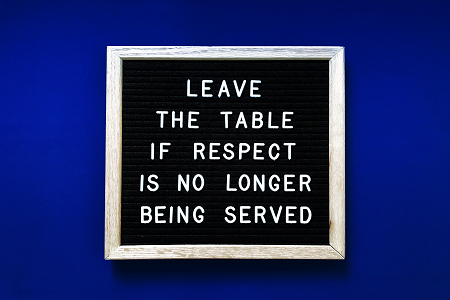
Introduction
In the quest for improved mental wellness, we often focus on therapy, medication, and lifestyle changes. While these approaches are undoubtedly valuable, we sometimes overlook the profound influence that our surroundings can have on our mental state. The use of colour and design in our living and working environments can play a significant role in promoting or hindering our mental wellness.
This article explores the fascinating relationship between colour and environment and how it affects our mood and mental well-being. We will delve into the psychological aspects of colour, the role of design in mental wellness, and practical tips on how to use these elements to create a harmonious, mood-enhancing space.
The Psychology of Colour
colour is a universal language that has the power to evoke emotions and feelings. It plays a crucial role in our daily lives and can have a profound impact on our mood. The field of colour psychology seeks to understand these emotional responses to different colours and how they can be harnessed to enhance mental wellness.
1. Red: Passion and Energy
- Red is a vibrant and stimulating colour that is often associated with strong emotions such as passion and excitement.
- In a mental health context, it can be used to evoke energy and motivation.
- However, excessive use of red can be overwhelming and may even provoke anxiety in some individuals.
2. Blue: Calm and Serenity
- Blue is frequently linked with feelings of calm, tranquility, and serenity.
- It is a popular choice for bedrooms and meditation spaces, as it can help reduce stress and promote relaxation.
- On the flip side, too much blue can lead to feelings of sadness or detachment.
3. Yellow: Positivity and Optimism
- Yellow is a bright, cheerful colour that often represents positivity and optimism.
- It can be particularly effective in combating feelings of depression or low energy.
- Overuse of yellow can lead to feelings of restlessness or irritation.
4. Green: Balance and Harmony
- Green is associated with balance, harmony, and nature.
- It has a calming and rejuvenating effect, making it an excellent choice for spaces where people seek to recharge.
- In excess, green can lead to feelings of boredom or stagnation.
5. Purple: Creativity and Luxury
- Purple is often associated with creativity, luxury, and sophistication.
- It can inspire artistic pursuits and imagination.
- Overusing purple may induce feelings of frustration or confusion.
6. White: Purity and Clarity
- White is often seen as a symbol of purity and simplicity.
- It can create a sense of clarity and openness in a space.
- However, excessive white can feel sterile and cold.
7. Black: Elegance and Mystery
- Black is a powerful and dramatic colour often associated with elegance and mystery.
- When used strategically, it can add depth and sophistication to a space.
- Too much black can create a sense of heaviness and oppression.
The Role of Design in Mental Wellness
Beyond colour, the overall design of an environment can significantly impact mental wellness. Thoughtful design can help create spaces that promote relaxation, reduce stress, and enhance mood. Here are some key design elements to consider:
- Natural Light:
- Exposure to natural light has been linked to improved mood and better mental health.
- Design your spaces to maximize the entry of natural light through large windows, skylights, and open floor plans.
- Biophilic Design:
- Incorporating elements of nature into your environment, such as plants and natural materials, can reduce stress and increase overall well-being.
- Clutter-Free Spaces:
- A cluttered environment can contribute to feelings of anxiety and overwhelm.
- Organize and declutter your space to create a calming and peaceful atmosphere.
- Comfortable Furniture:
- Choose comfortable and ergonomic furniture that supports relaxation and reduces physical stress.
- Personalization:
- Allow individuals to personalize their spaces to make them feel more comfortable and connected to their environment.
- Aromatherapy:
- Consider using aromatherapy to enhance mood. Pleasant scents can have a profound impact on mental wellness.
Practical Tips for Enhancing Mental Wellness Through Design
Now that we've explored the psychology of colour and the role of design, let's delve into practical tips for using colour and design to create environments that promote mental wellness.
- Create a Calming Bedroom:
- Use soothing colours like soft blues, greens, or muted purples.
- Invest in comfortable bedding and blackout curtains to create a restful sleep environment.
- Design an Inspiring Workspace:
- Incorporate vibrant colours like yellow and green to boost creativity and motivation.
- Ensure ample natural light and ergonomic furniture to enhance productivity.
- Promote Relaxation in the Living Room:
- Use a combination of cool and warm colours to strike a balance between comfort and energy.
- Arrange furniture to facilitate social interactions and relaxation.
- Design a Spa-Like Bathroom:
- Opt for a calming colour palette of soft blues or earthy greens.
- Introduce elements of nature, such as houseplants, to create a serene atmosphere.
- Embrace Outdoor Spaces:
- Utilize your outdoor spaces by creating a comfortable, nature-inspired environment.
- Incorporate elements like wooden furniture, greenery, and soft lighting.
- Personalize Your Space:
- Encourage personalization in every room, allowing individuals to add their unique touches.
- This fosters a sense of ownership and comfort.
- Mindful Use of Art and Décor:
- Choose artwork and décor that resonate with your emotional state and personality.
- Art can be a powerful tool for self-expression and emotional release.
Conclusion
Colour and design are potent tools for enhancing mental wellness. They can be harnessed to create spaces that promote relaxation, reduce stress, and improve mood. Understanding the psychology of colour and implementing thoughtful design principles can have a profound impact on our overall well-being.
In the pursuit of better mental health, it is important to recognize that there is no one-size-fits-all approach to design. Personal preferences, individual needs, and cultural factors all play a role in shaping our perception of colour and design. Therefore, the key is to create environments that resonate with your unique personality and emotional state while harnessing the power of colour and design to promote mental wellness.
Hashtags: #MentalWellness #ColourPsychology #DesignForHealth #WellBeing #InteriorDesign #MoodEnhancement #DesignTips #ColourAndEmotions #PsychologyOfColour #MindfulSpaces






